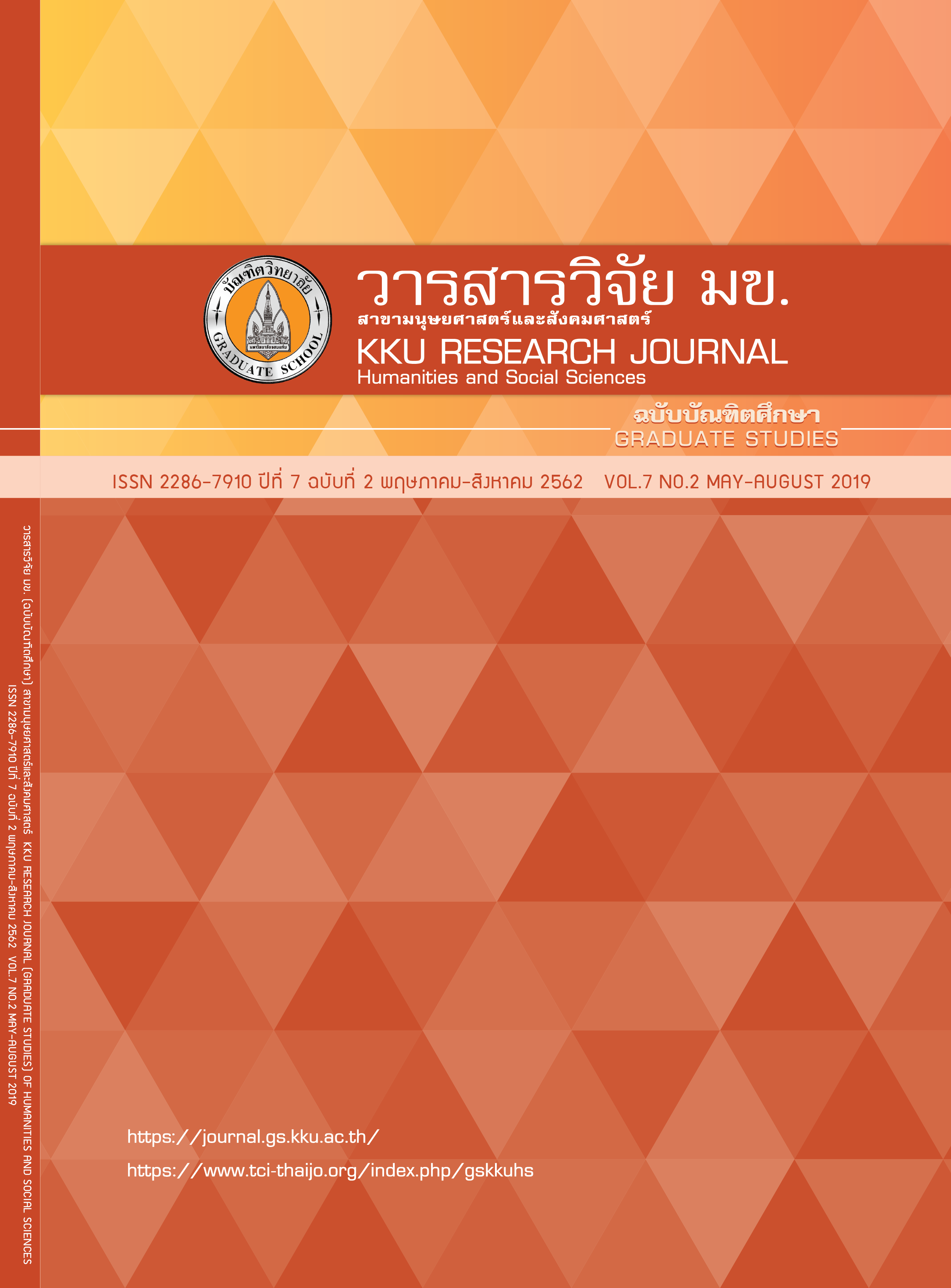Blended English Teaching Model Improving Communicative Skills
Keywords:
English language teaching, Blended learning, Teaching modelAbstract
The purpose of this research was to explore students’ communicative skills achievement after implementing the developed model which was from phase 2. This research employed Research and Development method. The developed model consisted of 5 components; 1) Orientation to the Model, 2) Model of Teaching, 3) Application, 4) Instructional and Nurturant Effects and 5) Assessment and Evaluation and was implemented in phase 3 with 42
Mae Fah Luang University students who enrolled English 1, 2nd semester, academic year 2017, was randomly divided into an experimental group (n=26) and a control group (n=16). The experimental group used the developed blended teaching model and CANVAS as to supplement in-class instruction whereas the control group used in-class instruction only. Using means, standard deviations and t-test, the findings revealed the overall achievement of the experimental group outperformed the control group (at α =0.01).
References
Policies on Teaching English [Internet]. 2014. [updated 2018, cited 2015 Feb 15].
Available from: http://english.obec.go.th/english/2013/index.php/th/2012-08-
08-10-26-5/62-2014-04-24-10-26-10
2. Boonpatanaporn P. Thai Students’ English Proficiency and the New World of AEC.
University of the Thai Chamber of Commerce Journal; Humanities and Social Sciences,
32(3), 214-228. 2012. Thai.
3. Office of the Higher Education Commission. The 11th Higher Educational
Development Plan (2012-2016) [Internet]. 2013. [updated 2018, cited 2015 Feb 15].
Available from: http://www.mua.go.th/users/bpp/developplan/download/higher_edu_
plan/PlanHEdu11_2555-2559.pdf
4. Kongsema K. Problems of Teaching English in Thailand. Research and
Development Journal, Loei Rajabhat University. 2011; 6(17): 73-86. Thai.
5. Noparat T. Use of Facebook Group as Blended Learning and Learning
Management System in Writing. 2014. Teaching English with Technology,
14(3). 3-15.
6. Supharatypthin D. Developing students’ ability in listening and speaking
English using the Communicative Approach of teaching. 2014.
International Journal of Arts & Sciences, 7(3), 141-149.
7. Uttawet P. Development of a Remedial English Course Using Multimedia to
Enhance English Proficiency and Learning Motivation of Low English Proficiency
Students. STOU Education Journal. 2014; 7(2): 127-140. Thai.
8. Richards J C, Rodgers T. Approach and Method in Language Teaching.
3rd ed. New York: Cambridge University Press. 2014.
9. Richards J C. Communicative Language Teaching Today. New York:
Cambridge University Press. 2006.
10. Angkawattanakul S. Teaching English as a Foreign Language. Bangkok:
Chulalongkorn University Press. 1992. Thai.
11. Greenberg B, Horn M. [Speakers]. Blended Learning [Online Video
Streaming]. 2015. [updated 2018, cited 2015 September 1]. Available from:
https://www.khanacademy.org/partner-content/ssf-cci
12. Staker H, Horn B. Classifying K-12 Blended Learning. 2012.
[updated 2018, cited 2015 October 29]. Available from
http://www.christenseninstitute.org/wp-content/uploads/2013/04/
Classifying-K-12-blended-learning.pdf
13. Patrick S, Kennedy K, Powell A. Mean What You Say: Defining and
Integrating Personalized, Blended and Competency Education [Internet].
2013. [updated 2015, cited 2015 October 29]. Available from:
http://www.inacol.org/wp-content/uploads/2015/02/mean-what-you-say.pdf
14. Hsiu-Ting Hung. Flipping the classroom for English language learners to
foster active learning. Computer Assisted Language Learning. 2015.
[updated 2017, cited 2015 November 5]. Available from:
http://www.tandfonline.com/doi/full/10.1080/09588221.2014.967701
15. Richey C, Klein D. Design and Development Research. New York:
Routledge. 2007.
16. Safranj J. Using Information Technology in English Language Learning
Procedure: Blended Learning. Procedia- Social and Behavioral Sciences.
2013; 83: 514-521. [updated 2018, cited 2015 September 18]. Available from
https://www.sciencedirect.com/science/article/pii/S187704281301166X
17. Sahin-Kizil A. Blended instruction for EFL learners: Engagement,
learning and course satisfaction. The JALT CALL Journal. 2014; 10(3):
175-188. [updated 2018, cited 2015 September 18]. Available from
https://eric.ed.gov/?id=EJ1107909
18. Bataineh R F, Mayyas M B. The Utility of Blended Learning in EFL
Reading and Grammar: A Case for Moodle. Teaching English with
Technology, 17(3). 35-49. 2017
19. Kwangsawad T. Teaching English Through Technology. Bangkok:
Chulalongkorn University Press. 2014. Thai.



